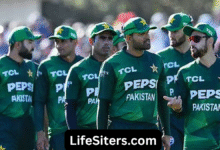Denmark National Football Team vs England National Football Team Lineups

Denmark National Football Team vs England National Football Team Lineups The clash between the Denmark and England national football teams in the UEFA Euro 2024 was more than just a group-stage encounter; it was a meeting of two tactically sophisticated squads led by experienced managers and anchored by some of the brightest talents in world football. Held in Frankfurt at the Commerzbank-Arena, this matchup drew massive anticipation from fans and analysts alike. Although it ended in a 1–1 draw, the game delivered a rich narrative, not just through goals and saves, but through how each team lined up and adjusted during the 90 minutes.
Understanding the match requires a deeper dive into how the two sides were organized, the strategic intentions behind the starting lineups, and how the on-field dynamics reflected each manager’s vision. Both teams approached the game with subtle variations in their tactical setups, designed to exploit the opponent’s weaknesses while playing to their own strengths.
Denmark’s Lineup: Compact Shape and Midfield Balance
Denmark, under Kasper Hjulmand, went with a pragmatic and intelligent system. The Danes deployed a formation resembling a 3-4-1-2. This shape allowed them to maintain defensive solidity while still offering enough creative freedom in attack. Kasper Schmeichel started in goal, providing leadership and composure. Ahead of him, the defensive trio of Joachim Andersen, Andreas Christensen, and Jannik Vestergaard was tasked with Denmark National Football Team vs England National Football Team Lineups containing England’s high-profile forwards while initiating play from the back.
The wing-back roles were crucial. Joakim Maehle and Victor Kristiansen played on the flanks, offering width in attack but also dropping deep to form a back five when needed. Their overlapping runs and defensive discipline allowed Denmark to transition between phases smoothly. This fluidity gave the midfield duo of Pierre-Emile Højbjerg and Morten Hjulmand the confidence to control the tempo without worrying excessively about defensive transitions.
Christian Eriksen, playing as a central attacking midfielder, was the lynchpin. He floated between lines, acting as the bridge between midfield and the striking pair of Rasmus Højlund and Jonas Wind. Eriksen’s vision and technical ability made him Denmark’s most creative outlet. Højlund and Wind, though physically different forwards, complemented each other well—one offering pace and movement, the other aerial presence and hold-up play.
Denmark’s goal, a thunderous strike from Morten Hjulmand, epitomized their approach: patient buildup play, midfield composure, and a willingness to shoot from range when space opened up.
England’s Starting XI: A Blend of Stability and Star Power
England manager Gareth Southgate named an unchanged starting lineup from their previous match, opting to continue with the 4-2-3-1 formation that had served them well. Jordan Pickford was in goal, a reliable presence who has been Southgate’s first-choice keeper for several tournaments.
The backline featured Kyle Walker at right-back and Kieran Trippier on the left. Trippier, naturally a right-sided player, was once again asked to play on the opposite flank due to injuries in the squad. At center-back, John Stones partnered with Marc Guéhi, a rising talent showing maturity beyond his years.
In midfield, Declan Rice anchored the base, tasked with shielding the defense and recycling possession. Beside him, Trent Alexander-Arnold continued in his experimental midfield role, a decision that has sparked intense debate among fans and pundits. Alexander-Arnold’s inclusion was designed to offer deeper playmaking from central areas, using his range of passing to unlock defenses.
The attacking trio of Bukayo Saka, Jude Bellingham, and Phil Foden supported captain Harry Kane up front. Each of these players brings a different attribute: Saka’s directness and dribbling, Bellingham’s energy and box-to-box movement, and Foden’s intricate technical play. Kane, as ever, combined the role of goalscorer and playmaker, often dropping deep to link play.
England took an early lead thanks to Kane’s finish, a product of a high press initiated by Kyle Walker. The goal was well-executed and showcased the importance of quick transitions and clinical finishing, yet it also masked some of England’s struggles, particularly in central midfield where Denmark increasingly found pockets of space.
Tactical Adjustments and Game Flow
After conceding, Denmark responded by increasing their midfield intensity and pressing higher up the pitch. Hjulmand and Højbjerg gained control, particularly exploiting the spaces between England’s midfield duo. Eriksen became more influential, finding gaps and initiating attacks. It was this increasing dominance that culminated in Denmark’s equalizer. Hjulmand, often considered a more defensive midfielder, surprised England with a powerful strike from outside the box—an equalizer that lifted Danish spirits and destabilized England’s rhythm.
From then on, Denmark looked the more assured side in possession. Their ability to manage the game from midfield put England on the back foot for large portions of the match. Despite this, England had moments of threat, especially when Foden struck the post. However, these were isolated incidents rather than signs of consistent control.
Southgate made substitutions in the second half, bringing on fresh legs to regain midfield dominance and defensive compactness, but the changes did little to shift the momentum definitively in England’s favor. Denmark, too, introduced players like Andreas Skov Olsen and Yussuf Poulsen to increase their attacking threat in the dying minutes.
In the end, the match concluded 1–1, a fair reflection of two teams who had their moments but lacked the finishing touch or tactical precision to secure all three points.
Player Performances and Key Matchups
The individual battles across the pitch played a huge role in shaping the game. In defense, Denmark’s Christensen did an excellent job keeping Harry Kane in check. Kane’s tendency to drop deep was managed well by the Danish backline, preventing England from exploiting space behind.
Foden had perhaps his best game of the tournament so far, finding space and nearly scoring. However, his influence waned as Denmark’s midfield regained control. On the other side, Bukayo Saka struggled to impact the game consistently, often finding himself isolated against Denmark’s well-drilled defensive structure.
In midfield, Højbjerg and Hjulmand clearly outperformed Rice and Alexander-Arnold. The Danish duo were more aggressive, more composed on the ball, and dictated the pace. This matchup was pivotal and arguably tipped the balance in Denmark’s favor for much of the game.
Christian Eriksen’s performance was another highlight. Though not as flashy as in years past, he orchestrated Denmark’s play with subtlety, using his positioning and passing to create openings. His leadership was evident throughout.
Implications for the Tournament
The result left both teams with something to think about. For Denmark, the draw against a higher-ranked opponent was encouraging. It demonstrated that their defensive organization, midfield quality, and tactical flexibility could pose problems for even the strongest teams. Their chances of progressing to the knockout stages remained alive, provided they could secure a result in their final group-stage match.
For England, however, questions arose. Although they remained top of the group, concerns about their midfield structure and lack of attacking fluidity became louder. The use of Alexander-Arnold in midfield, while bold, seemed to unbalance the team, leaving Rice with too much defensive responsibility and removing the kind of tempo-setting presence usually provided by a natural midfielder.
Fans and media began speculating on potential changes for the final group-stage game. Should Southgate bring in a more traditional midfielder? Should Foden be given a more central role? And could the inclusion of an energetic player like Conor Gallagher or Kobbie Mainoo offer the spark England seemed to lack?
FAQs About Denmark vs England Lineups and Match
Why did Denmark use a 3-4-1-2 formation instead of a more common 4-3-3?
Kasper Hjulmand favored the 3-4-1-2 to Denmark National Football Team vs England National Football Team Lineups provide defensive stability while maximizing the influence of Christian Eriksen in the hole behind the strikers. The system allowed for quick transitions and greater control in wide areas thanks to overlapping wing-backs.
What role did Trent Alexander-Arnold play in England’s lineup?
Trent was used in a central midfield role alongside Declan Rice. This was part of Gareth Southgate’s strategy to leverage his passing range and creativity, but it left England exposed defensively at times, especially when Denmark flooded the midfield.
Was the draw a fair result based on the lineups and play?
Yes, the 1–1 scoreline was a fair reflection. Both teams had strong spells, and although England scored first, Denmark controlled much of the midfield battle. Neither side fully asserted dominance, which made the draw feel appropriate.
Will England change their midfield lineup in the next game?
It’s likely. Given the criticism and clear imbalance, Southgate may opt for a more traditional midfielder in place of Alexander-Arnold. Possible alternatives include Gallagher or a deeper role for Bellingham, depending on fitness and tactical needs.
Who was the standout player from the match?
Morten Hjulmand arguably had the most impactful performance, scoring the equalizer and dominating midfield alongside Højbjerg. For England, Phil Foden showed flashes of brilliance and came closest to scoring after Kane’s opener.





